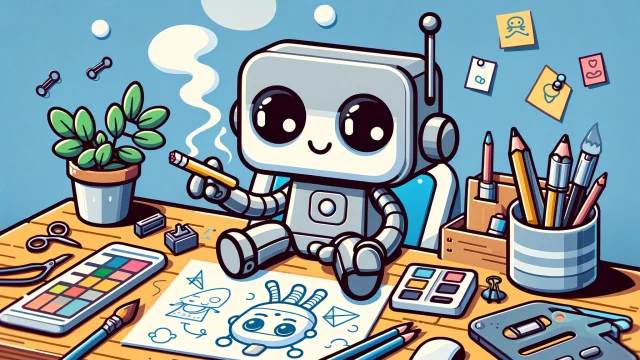Dragon Ball Cell: The Perfect Bio-Engineered Villain
Cell, one of the most iconic antagonists in the Dragon Ball series, is a bio-engineered being created by Dr. Gero’s supercomputer. Introduced during the Android Saga in Dragon Ball Z, Cell’s goal is to achieve ultimate perfection by absorbing other Androids and unleashing his immense power. His cunning intellect, adaptive abilities, and intense battles with the Z Fighters have solidified his status as one of the most memorable villains in anime history.
This article explores Cell’s origins, abilities, transformations, and his impact on the Dragon Ball franchise.
1. Who is Cell?
1.1. Creation
- Cell is a bio-organic Android created by Dr. Gero’s computer. He is composed of the genetic material of some of the strongest fighters in the universe, including Goku, Vegeta, Piccolo, and Frieza.
- Unlike other Androids, Cell was designed to evolve through absorption, aiming to become the “perfect” life form.
1.2. Motivation
- Driven by his programming, Cell seeks perfection by absorbing Android 17 and Android 18. His ultimate goal is to prove his superiority by defeating all challengers.
2. Cell’s Transformations
Cell undergoes three major transformations during his arc, each increasing his power and altering his appearance.
2.1. Imperfect Form
- Appearance: In his initial form, Cell has a more insect-like appearance with a long tail used for absorption.
- Abilities:
- Can absorb the life force of humans, gaining strength with each victim.
- His cunning and stealth allow him to elude detection while hunting Androids 17 and 18.
2.2. Semi-Perfect Form
- Appearance: After absorbing Android 17, Cell becomes more humanoid but retains some insect-like traits.
- Abilities:
- Dramatically increased strength and durability.
- Gains the confidence to fight the Z Fighters head-on.
2.3. Perfect Form
- Appearance: Achieved after absorbing Android 18, Cell becomes sleek, muscular, and symmetrical, embodying his “perfect” design.
- Abilities:
- Access to all the techniques of his genetic contributors, such as the Kamehameha, Special Beam Cannon, and Frieza’s Death Beam.
- Enhanced regeneration, speed, and ki control.
- The ability to self-destruct as a last resort.
3. The Cell Games
3.1. Setting the Stage
- After achieving his perfect form, Cell announces the Cell Games, a tournament where he challenges Earth’s strongest fighters.
- The event serves as a test of Cell’s power and a showcase for his superiority.
3.2. The Z Fighters’ Struggles
- Despite their best efforts, the Z Fighters, including Goku and Vegeta, struggle to match Cell’s power.
- Goku forfeits his fight with Cell, believing that Gohan has the potential to surpass him.
3.3. Gohan’s Transformation
- Gohan achieves Super Saiyan 2 after Cell kills Android 16, triggering his latent power.
- Gohan’s overwhelming strength leads to a dramatic battle, where he ultimately defeats Cell with a father-son Kamehameha, aided by Goku’s spirit.
4. Cell’s Powers and Abilities
4.1. Genetic Advantages
- Thanks to his genetic makeup, Cell can use techniques and abilities from multiple fighters, including:
- Kamehameha (Goku).
- Special Beam Cannon (Piccolo).
- Solar Flare (Tien).
- Regeneration (Piccolo and Namekian DNA).
4.2. Regeneration
- Cell’s ability to regenerate from a single cell makes him incredibly difficult to kill, requiring immense power to destroy him completely.
4.3. Tactical Intelligence
- Cell’s strategic thinking and ability to adapt to his opponents make him a formidable foe, capable of exploiting weaknesses and outsmarting his enemies.
5. Impact on the Dragon Ball Franchise
5.1. A Memorable Villain
- Cell’s complex motivations, evolving forms, and intense battles make him one of the most iconic villains in Dragon Ball history.
- His arc is praised for its high stakes, emotional depth, and epic confrontations.
5.2. Expanding the Lore
- The Cell Saga introduced new elements to the series, such as the concept of bio-engineered warriors and the exploration of Gohan’s hidden potential.
5.3. Legacy in Games and Media
- Cell is a recurring character in Dragon Ball video games, often portrayed as a powerful and strategic fighter.
- His presence continues in spin-offs like Dragon Ball Xenoverse and Dragon Ball FighterZ.
6. Fun Facts About Cell
- Voice Actors: Cell is voiced by Norio Wakamoto in Japanese and Dameon Clarke in the English dub, both of whom bring depth and menace to the character.
- Name Origin: Cell’s name reflects his biological nature as a being composed of cells from different fighters.
- Popularity: The Cell Saga is widely regarded as one of the best arcs in Dragon Ball Z, with many fans considering it a high point of the series.
Conclusion: A Perfect Villain
Cell embodies the essence of a great antagonist: intelligence, adaptability, and overwhelming power. His journey from a stealthy predator to the self-proclaimed “perfect being” offers one of the most thrilling narratives in Dragon Ball Z. Through his battles with the Z Fighters and his role in Gohan’s transformation, Cell remains a pivotal character whose influence resonates throughout the franchise.
Whether you admire his tactical mind or fear his destructive ambition, Cell’s legacy as a defining villain in the Dragon Ball universe is undeniable.

